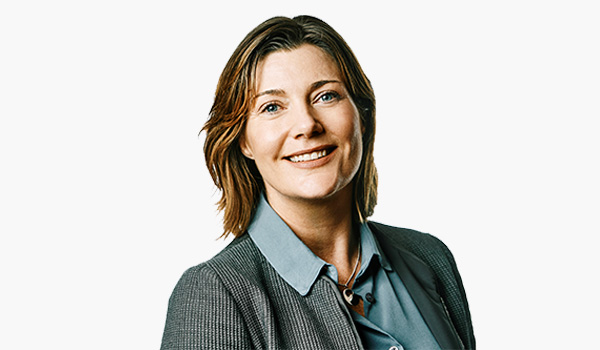Kate McHugh has vivid childhood memories of the battle of wills she fought with her parents over food, particularly one involving a bowl of Irish stew.
A very young Kate refused to eat the meal, even more so after it had gone cold. Her parents were not letting her leave the dinner table until she did.
So, she sat in front of an undisturbed bowl of the offending stew for what felt like hours, “but was probably more like half an hour”.
“I was being taught the lesson that we did not waste food,” Kate said.
Her family always placed a premium on not wasting food, which Kate said stemmed from her grandparents being farmers and her father’s work in the beef industry.
She learned to appreciate those family values as she grew up and they have developed into a passion.
Sydney-based Kate is the founder of KitchenHand, a digital platform that aims to help people reduce household food waste through education, advice and a handy recipe creation tool.
Kate’s love of food developed during her time at university and then in her career
“I have always loved food and cooking,” she said.
“When I was at uni I worked in bars, and I would always be hanging around the kitchen door. Then, when I started in my corporate career, I always had these food gigs on the side; I had a food blog and at one stage I reviewed restaurants for Gourmet Traveller.”
Eventually, Kate’s career in sustainability and her appreciation of food intersected.
“While I was working in sustainability, I started to understand food waste on a large-scale level rather than thinking it’s bad because Mum and Dad said so,” Kate said.
Covid was the catalyst for a reassessment of her working life and saw Kate further investigate sustainable food systems, focusing on household food waste.

KitchenHand was initially developed to help people better understand the storage of fresh produce and to publish articles on food waste.
The site evolved to include the recipe tool that allows users to have meals created for them using their nominated ingredients.
Users can refine the recipes by answering questions on dietary preferences, what cooking appliances they want to use, the time they want to take preparing the meal and the number of portions.
You can also access recipes on the site based around seasonal availability of produce.
“We use artificial intelligence (AI) to custom-write recipes using what ingredients people have in ways that suit them,” Kate said. “It’s free at the moment but we ask people to think about subscribing to help us cover the bills.”
Globally, 8–10% of greenhouse gas emissions come from wasted food
Kate sees the tool as a valuable resource to reduce food waste, which she emphasised with startling statistics.
“In Australia we waste $40 billion worth of food each year and $20 billion of that is thrown out at a household level,” she said.
“When people talk about food waste, they are quick to point the finger at supermarkets throwing out food, but supermarkets throw out very little food compared with what Australian families throw out.”
Kate said reasons for the amount of food wasted varied but included poor planning before shopping, cooking too much and not eating leftovers.
“It’s a huge waste of time and effort if you are going shopping every week and putting 20% of those groceries in the bin,” she said.
“People don’t enjoy throwing food out, they feel bad about it, and yet the average Australian household still throws out about $2,500 worth of food each year. I think people can save themselves a bit of heartache by just cooking what they have instead of finding a recipe and then doing a shop for new food or ordering takeaway.”
Kate said wasted food also had serious environmental impacts.
“When food is wasted, it is then thrown into a bin and most of that still goes to landfill where it turns into methane,” she said.
“Globally, 8–10% of greenhouse gas emissions come from wasted food.”
Kate said she also felt strongly about the way food was sold and how it contributed to waste.
“The way food is packaged and sold does not correlate to portion sizes in recipes, so we end up with all these little bits and pieces left over and we don’t know what to do with them,” she said.
“That’s where the recipe tool is really valuable.”
Go to kitchenhand.io to learn more about food waste and to try the recipe tool.





